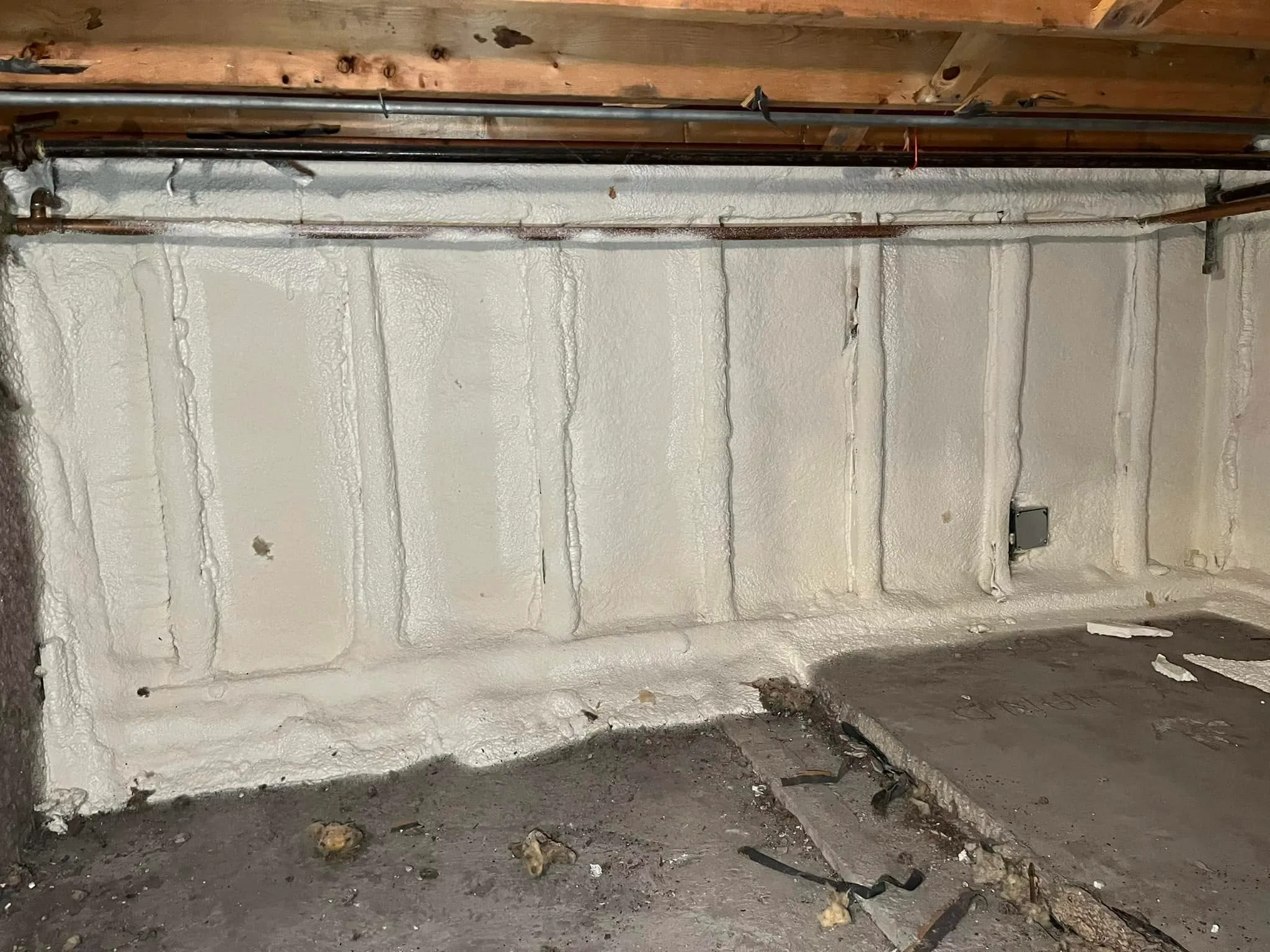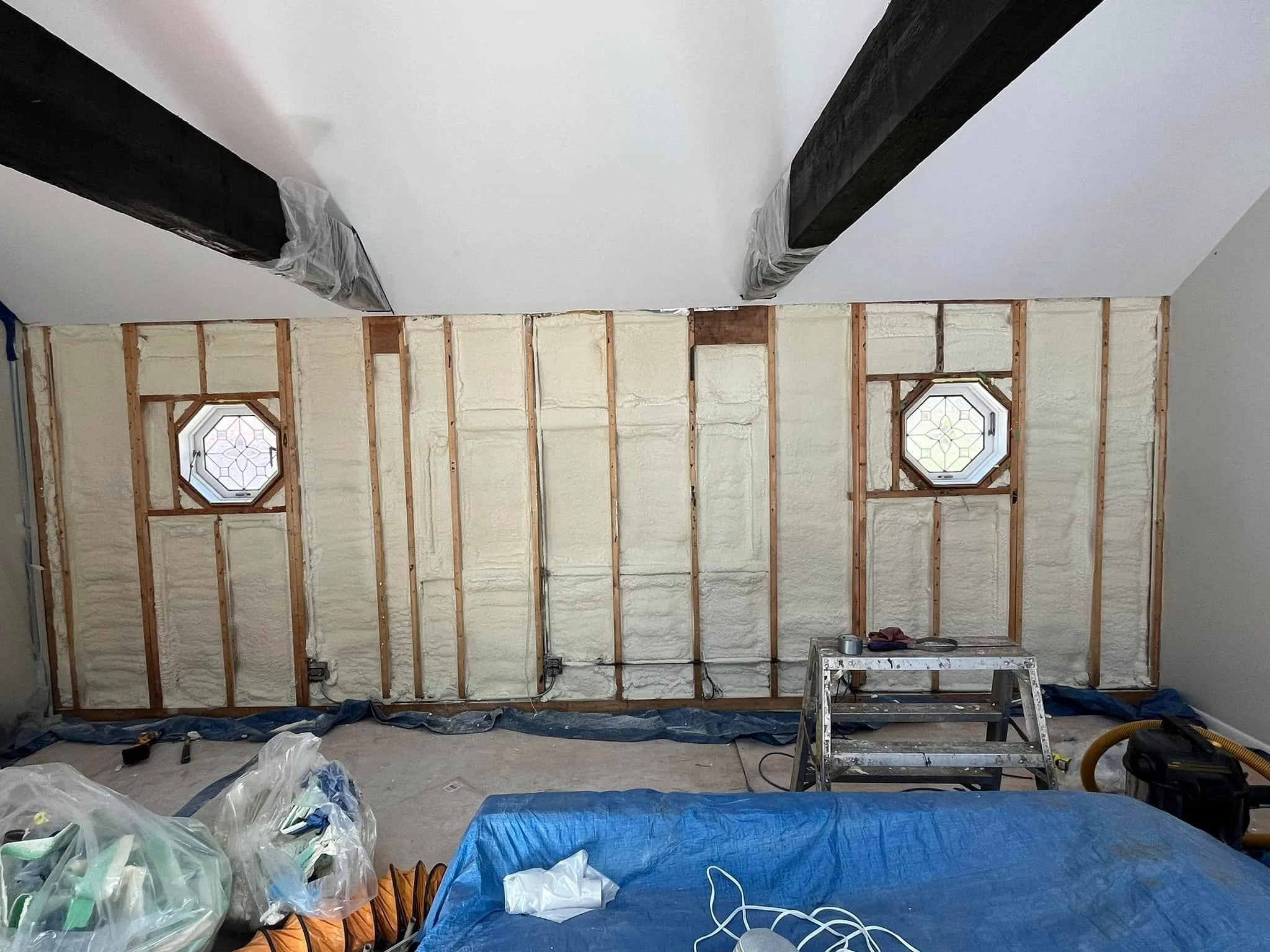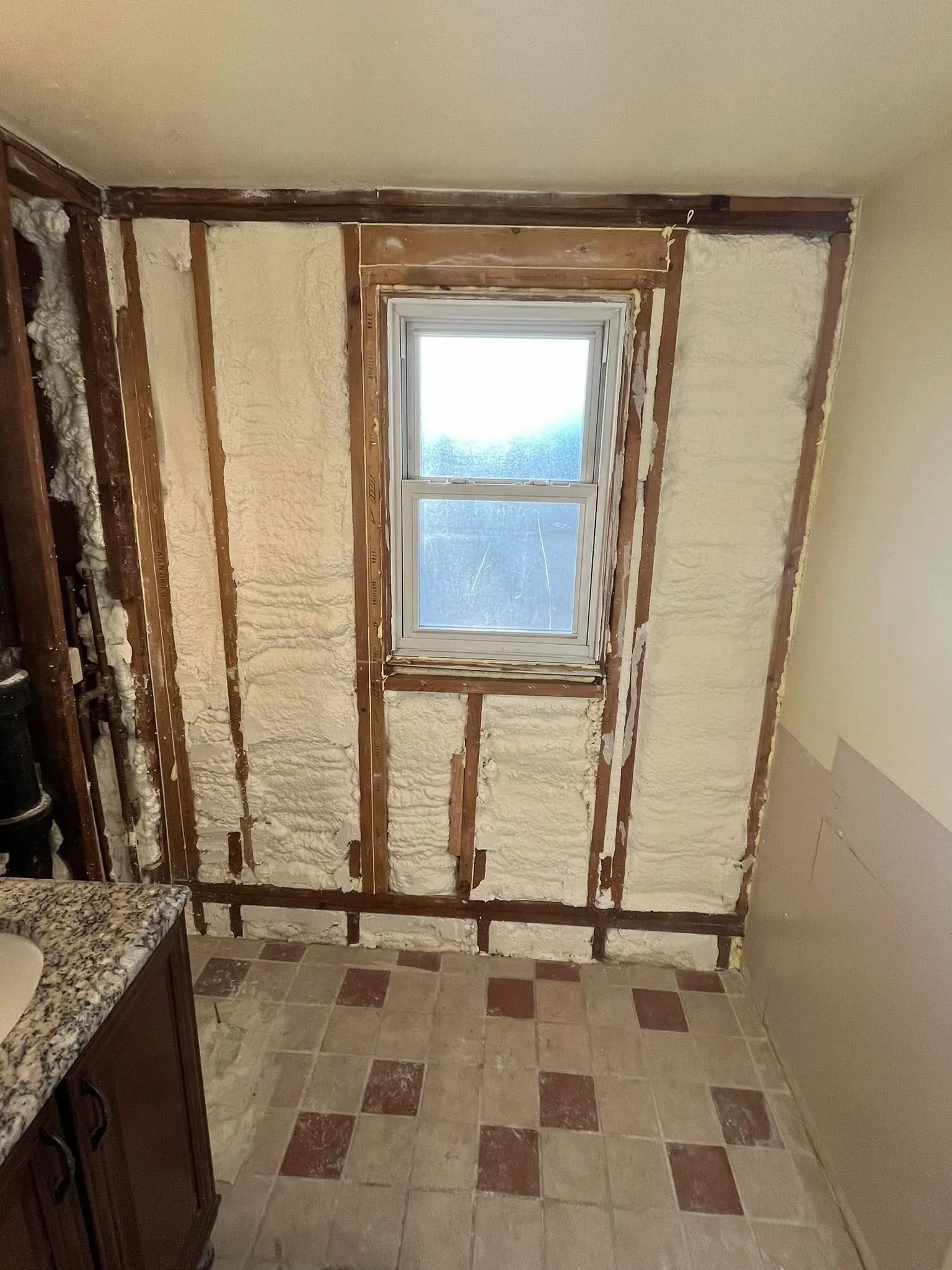
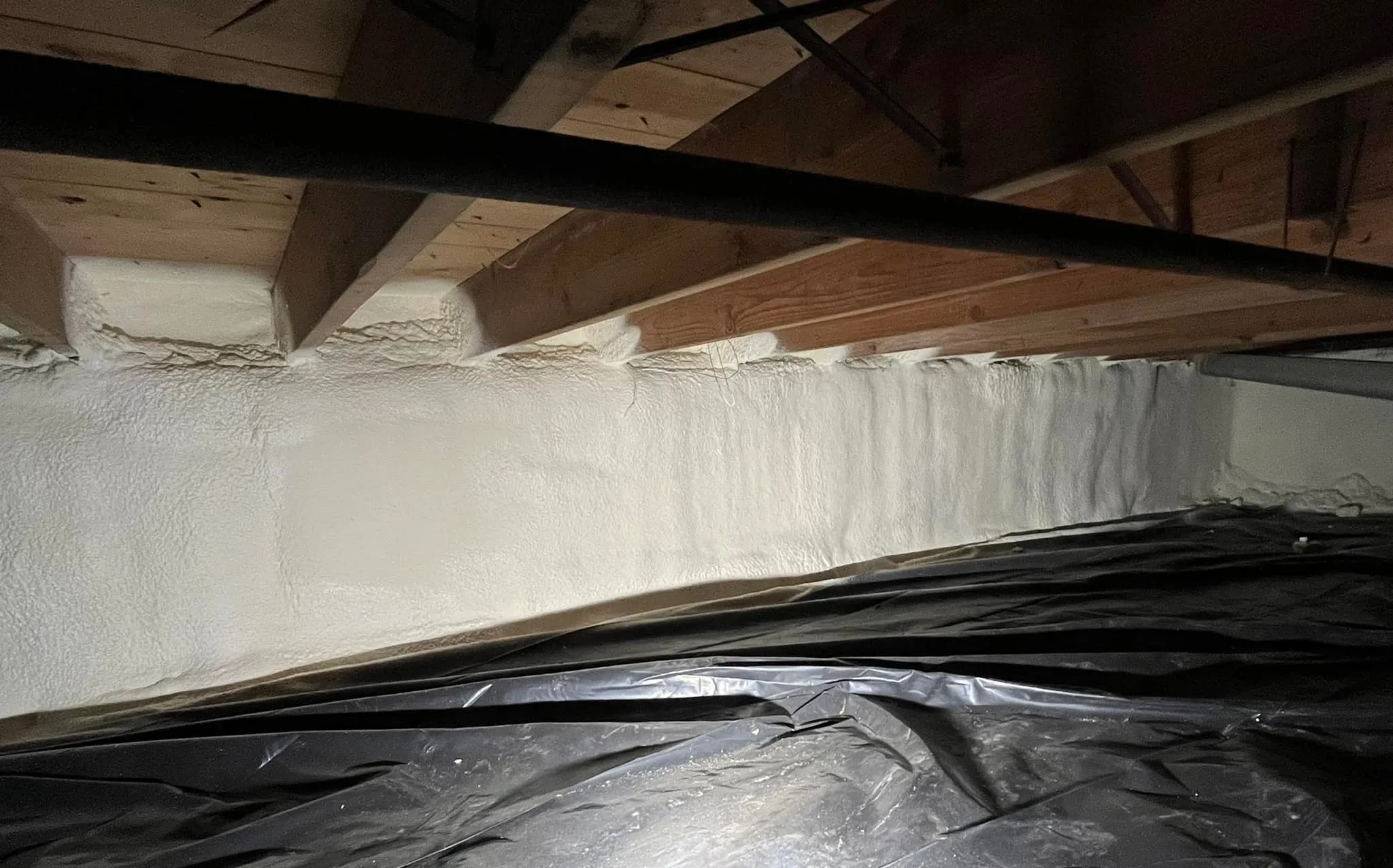
Proper insulation directly enhances energy code compliance by reducing thermal bridging, minimizing air leakage, and achieving required R-values mandated by local building standards. Strategic insulation placement in walls, attics, foundations, and crawlspaces creates continuous thermal barriers that prevent heat transfer, enabling buildings to meet or exceed energy performance requirements. Modern energy codes like IECC 2021 and state-specific regulations establish minimum thermal resistance standards that quality insulation materials consistently deliver.
Energy code compliance depends on three critical factors: thermal performance, air sealing effectiveness, and continuous insulation coverage. Buildings that incorporate comprehensive insulation strategies typically exceed baseline energy efficiency requirements by 15-30%, positioning property owners for long-term utility savings and regulatory approval. South Chicago Insulation has observed that properly executed insulation projects consistently pass energy audits while delivering measurable performance improvements across residential and commercial applications.
Current energy codes establish specific thermal performance standards that vary by climate zone and building type. The International Energy Conservation Code (IECC) 2021 requires R-values ranging from R-13 to R-21 for wall assemblies, R-30 to R-60 for ceiling assemblies, and R-10 to R-20 for foundation walls depending on geographic location. These requirements represent minimum standards that insulation systems must achieve to receive building permits and pass final inspections.
Air sealing requirements complement thermal performance standards by limiting uncontrolled air infiltration to 3-5 air changes per hour at 50 pascals pressure differential. Energy codes mandate continuous air barriers that work alongside insulation materials to create unified building envelope systems. Thermal bridging restrictions require continuous insulation placement that eliminates gaps where structural elements could compromise thermal performance.
| Climate Zone | Wall R-Value | Ceiling R-Value | Foundation R-Value | Air Changes/Hour |
|---|---|---|---|---|
| Zone 3 | R-13 | R-30 | R-10 | 5 ACH50 |
| Zone 4 | R-13 | R-38 | R-10 | 5 ACH50 |
| Zone 5 | R-20 | R-49 | R-15 | 3 ACH50 |
| Zone 6 | R-20 | R-49 | R-15 | 3 ACH50 |
| Zone 7 | R-21 | R-49 | R-20 | 3 ACH50 |
Bonus Tip: Document insulation R-values and installation methods during construction to streamline energy code inspections and demonstrate compliance during permit reviews.
Different insulation materials provide varying levels of code compliance effectiveness based on thermal resistance, air sealing properties, and installation characteristics. Spray foam insulation delivers superior air sealing while achieving high R-values per inch, making it particularly effective for meeting stringent energy codes. Blown-in insulation fills cavities completely, eliminating gaps that could compromise thermal performance and code compliance.
Closed-cell spray foam provides R-6.5 to R-7 per inch with excellent air sealing properties, often exceeding code requirements in standard wall assemblies. Open-cell spray foam offers R-3.5 to R-4 per inch while providing effective air sealing at lower material costs. Traditional batt insulation requires careful installation to achieve rated R-values and typically needs supplemental air sealing to meet current energy codes.
| Insulation Type | R-Value per Inch | Air Sealing | Installation Complexity | Code Compliance Rating |
|---|---|---|---|---|
| Closed-Cell Spray Foam | R-6.5-7.0 | Excellent | Moderate | Excellent |
| Open-Cell Spray Foam | R-3.5-4.0 | Excellent | Moderate | Very Good |
| Blown-In Cellulose | R-3.6-3.8 | Good | Low | Good |
| Blown-In Fiberglass | R-2.2-2.7 | Fair | Low | Fair |
| Fiberglass Batts | R-3.1-3.4 | Poor | High | Poor |
Continuous insulation strategies eliminate thermal bridging by placing insulation materials outside structural framing members. This approach addresses energy code requirements that specifically target thermal bridge reduction in wall assemblies, foundation connections, and roof-to-wall transitions.
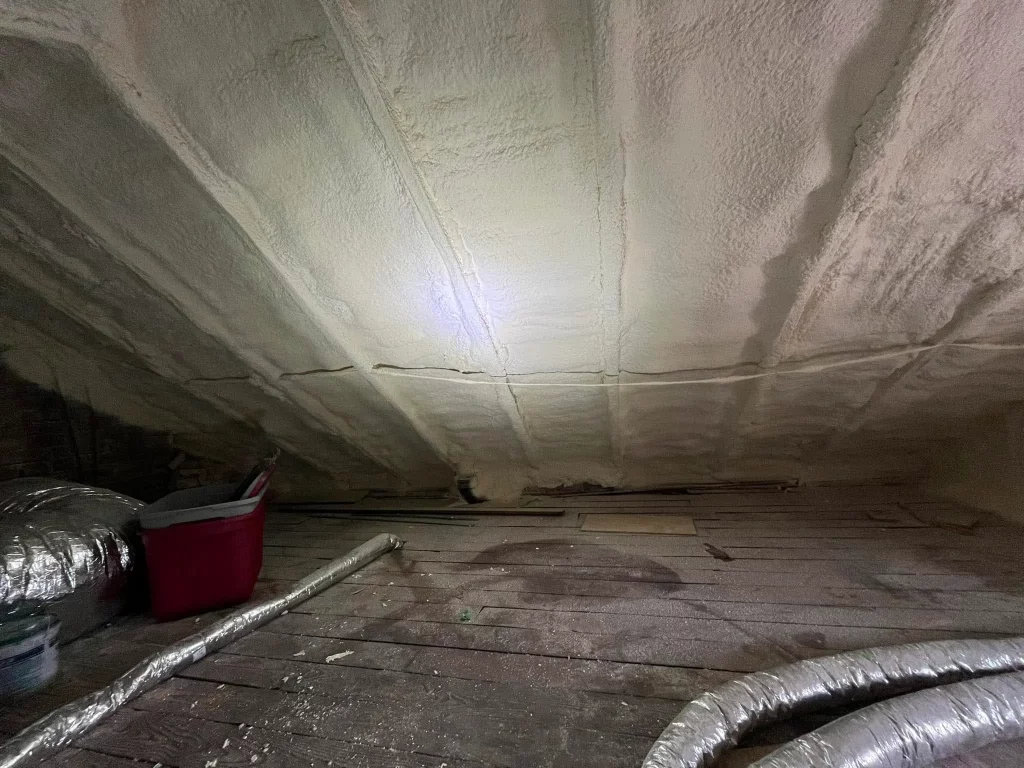
Effective insulation installation requires systematic approaches that address air sealing, thermal bridging, and continuous coverage requirements simultaneously. Professional installers focus on creating uninterrupted thermal barriers that extend from foundation to roof without gaps or compressions that could reduce performance below code requirements.
Air sealing must occur before insulation installation to create proper vapor barriers and prevent moisture issues that could compromise long-term performance. Spray foam applications naturally provide integrated air sealing, while traditional insulation materials require separate air barrier installation using plastic sheeting, caulks, or spray-applied membranes.
Bonus Tip: Schedule energy code inspections before drywall installation to allow inspectors clear visibility of insulation coverage and air sealing effectiveness.
Quality control measures during installation prevent common problems that lead to code compliance failures. Compressed insulation loses thermal resistance, creating cold spots that show up during thermal imaging inspections. Gaps around electrical outlets, plumbing penetrations, and structural members require careful sealing to maintain continuous air barriers.
Climate zone classifications directly impact energy code requirements and insulation strategies needed for compliance. Northern climates require higher R-values and more stringent air sealing to address heating loads, while southern regions focus on cooling efficiency and moisture management. Mixed climates present unique challenges requiring balanced approaches that address both heating and cooling seasons.
According to the U.S. Department of Energy, buildings in Climate Zones 5-7 must achieve wall R-values of R-20 or higher, often requiring continuous insulation strategies beyond cavity fill alone. Climate Zones 1-3 allow lower R-values but include specific requirements for radiant barrier installations and vapor barrier placement to address cooling loads and humidity control.
Moisture management becomes critical in humid climates where energy codes include specific vapor barrier requirements. Closed-cell spray foam provides integrated moisture barriers, while other insulation types require careful vapor barrier installation on the appropriate side of wall assemblies based on climate zone requirements.
Building envelope assessment identifies existing thermal bridges, air leakage points, and insulation deficiencies that must be addressed for code compliance. Professional energy audits using blower door testing and thermal imaging reveal problem areas that standard visual inspections might miss. Understanding specific local code requirements prevents costly rework when installations fail to meet jurisdiction-specific standards.
Permit requirements vary significantly between municipalities, with some requiring detailed insulation plans and R-value calculations before approval. Contractor licensing and insurance requirements ensure installations meet professional standards necessary for code compliance and warranty coverage. Material selection must balance initial costs against long-term performance to achieve both code compliance and project budget goals.
Timing coordination with other trades prevents conflicts that could compromise insulation effectiveness or code compliance. Electrical and plumbing rough-in work must be completed before insulation installation to ensure proper air sealing around penetrations. HVAC system sizing should be recalculated based on improved building envelope performance to prevent oversizing that could affect comfort and efficiency.
South Chicago Insulation provides specialized services designed to ensure energy code compliance across residential and commercial projects:
Not all insulation materials automatically ensure code compliance. Success depends on proper installation techniques, achieving required R-values, and meeting air sealing requirements specific to each climate zone and building type.
Energy code inspectors use visual assessments, thermal imaging equipment, and blower door testing to verify insulation coverage, R-value achievement, and air sealing effectiveness before issuing certificates of occupancy.
Existing buildings can be retrofitted with modern insulation systems to meet current energy codes, though specific requirements may vary based on the extent of renovation work being performed and local retrofit policies.
Bonus Tip: Keep all insulation material packaging and installation documentation to provide R-value verification during energy code inspections and future property assessments.
Successful energy code compliance requires comprehensive planning that addresses thermal performance, air sealing, and continuous insulation coverage as integrated systems rather than separate components. Property owners benefit from working with experienced insulation contractors who understand local code requirements and can recommend appropriate materials and installation methods for specific building types and climate conditions.
Long-term energy savings and improved comfort levels justify investments in high-performance insulation systems that exceed minimum code requirements. Buildings designed and constructed to surpass baseline energy codes typically achieve better resale values and lower operating costs throughout their service lives.
Achieving energy code compliance requires expertise in current regulations, proper material selection, and professional installation techniques that deliver measurable results. South Chicago Insulation combines extensive experience with advanced materials and proven installation methods to ensure projects meet or exceed all applicable energy code requirements.
Contact South Chicago Insulation at [email protected] or call (779) 803-8025 to discuss energy code compliance solutions for your specific project requirements. Professional consultation and detailed project planning ensure successful outcomes that provide long-term energy efficiency and regulatory approval.
Buildings that fail to meet energy code requirements cannot receive certificates of occupancy, preventing legal occupancy until compliance issues are resolved through additional insulation or air sealing work.
Energy codes typically update every three years at the international level, though local jurisdictions may adopt updates on different schedules or modify requirements based on regional climate and construction conditions.
Energy code requirements for renovations depend on the scope of work, with major renovations often triggering compliance with current codes while minor repairs may only need to meet standards in effect when the building was originally constructed.
Energy code compliance documentation includes insulation material certifications, R-value calculations, blower door test results, and inspector approval certificates that verify installation meets all applicable requirements.
Many utility companies and government programs offer rebates or tax credits for insulation improvements that exceed minimum energy code requirements, providing additional financial benefits beyond code compliance.

